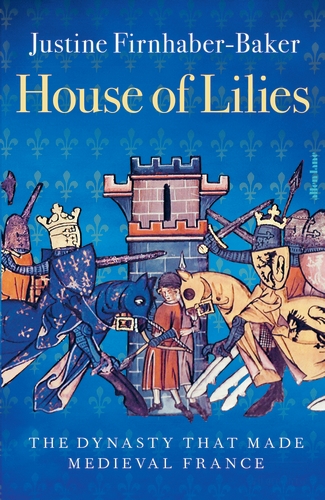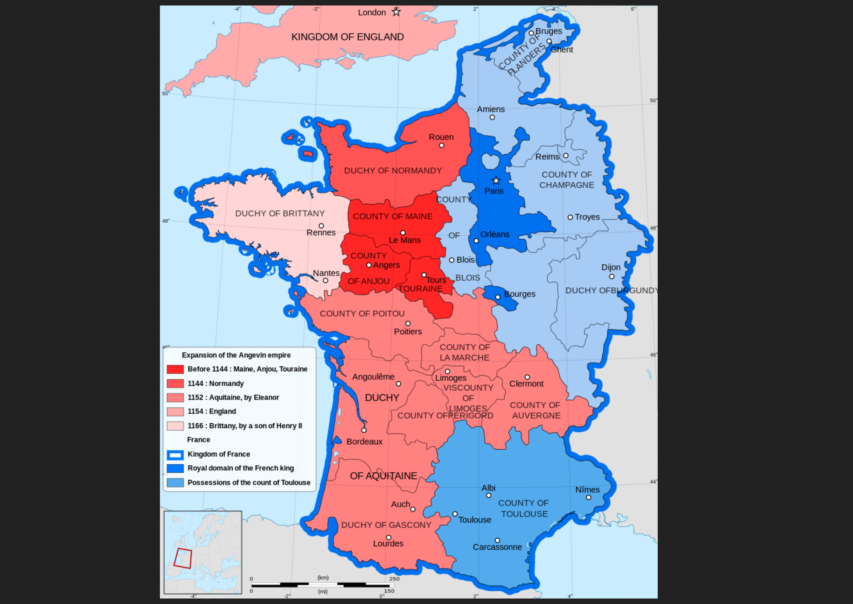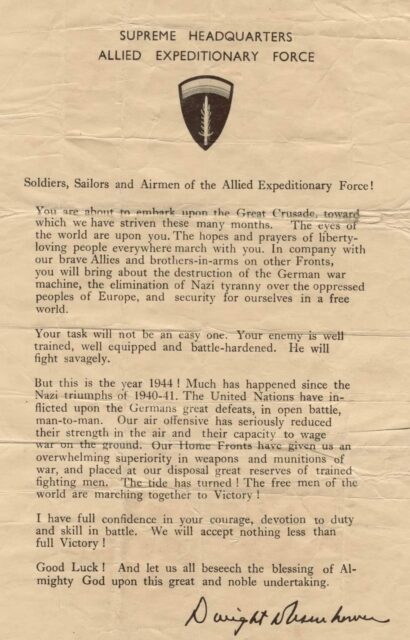The Tank Museum
Published Jun 14, 2024Normandy, 1944: in the dense bocage countryside, two tanks, the US-built M4 Sherman and the German PzKpfw IV go head-to-head in the fighting around the Allied bridgehead. Both are similar in capabilities but which will prevail?
In this film, Chris Copson compares the armour protection, firepower and mobility of the two designs, and we recount the events of a specific engagement fought at Mouen near Caen on 28th June, 1944.
00:00 | Intro
01:45 | Meet the Tanks
03:08 | Armour
07:37 | Firepower
12:19 | Mobility & Operation
13:29 | Tank Crews
16:37 | Summary
17:15 | Mouen, Normandy, 28 June 1944
23:10 | ConclusionThis video features archive footage courtesy of British Pathé.
#tankmuseum
October 14, 2024
Quality v Quantity? | Panzer IV v M4 Sherman | Tank V Tank – Normandy, 1944
October 3, 2024
D-Day 80th Anniversary Special, Part 2: Landings with firearms expert Jonathan Ferguson
Royal Armouries
Published Jun 12, 2024This year marks the 80th anniversary of D-Day, the Allied invasion of France which took place on 6th June 1944. From landing on the beaches of Normandy, the Allies would push the Nazi war machine and breach Hitler’s Atlantic Wall.
To commemorate this, we’re collaborating with IWM to release a special two-part episode as Jonathan will look at some of the weapons that influenced and shaped this historic moment in history.
Part 2 is all about the pivotal landings, including allied efforts to aid in its success.
0:00 Intro
0:25 Twin Vickers K Gun
2:03 Pointe du Hoc
2:45 Water off a DUKW’s back?
3:50 Magazines x3
4:07 Usage & History
5:50 Bring up the PIAT!
7:00 Dispelling (Or Projecting via Spigot) Myths
7:55 PIAT Firing Process
9:50 PIAT Details
10:31 Usage in D-Day
13:19 Pegasus Bridge
15:05 MG 42
15:41 Defensive Machine Gun
16:37 1200 RPM
17:35 Replaceable Barrel
19:08 Usage in D-Day
21:37 Sexton Self-Propelled Gun
21:33 Artillery in D-Day
22:15 Run-In Shoot
22:40 The Need for Mobile Artillery
23:25 Usage in D-Day
24:21 17-Pounder Gun
25:11 Function & Usage
26:05 Usage in D-Day
28:00 IWM at HMS Belfast
30:27 Outro
(more…)
September 19, 2024
D-Day Tanks: Operation Overlord’s Strangest Tanks
The Tank Museum
Published Jun 7, 2024An opposed beach landing is the most difficult and dangerous military operation it is possible to undertake. Anticipating massive casualties in the Normandy Landings, the British Army devised a series of highly specialized tanks to solve some of the problems – Hobart’s Funnies.
Named after General Sir Percy Hobart, commander of their parent unit, 79th Armoured Division, the Funnies included a mine clearing tank – the Sherman Crab, a flamethrower – the Churchill Crocodile and the AVRE – Assault Vehicle Royal Engineers which could lay bridges and trackways, blow up fortifications and much else besides.
In this video, Chris Copson looks at surviving examples of the Funnies and assesses their effectiveness on D Day and after.
00:00 | Introduction
01:24 | Operation Overlord
03:02 | Lessons from the Dieppe Raid
05:31 | The Sherman DD
07:21 | Exercise Smash
14:38 | Sherman Crab
17:38 | The AVRE
19:47 | Churchill Crocodile
23:15 | Did the Funnies Work?
28:49 | ConclusionThis video features archive footage courtesy of British Pathé.
#tankmuseum #d-day #operationoverlord
August 25, 2024
After Wittmann’s Tiger Tank Rampage – The Fight back at Villers-Bocage
The Tank Museum
Published May 10, 2024 16 productsMichael Wittmann’s rampage at Villers-Bocage was just the start of a fight that was far from the great victory the Germans would claim it to be. At 0930 on 13 June 1944, in the chaos that followed Wittmann’s fortuitous lunge into the British column, the men of the 4th County of London Yeomanry lick their wounds and set up their defences. They’ve been given the order to hold the Villers-Bocage at all costs — and will soon be fighting for their lives against a superior German force.
By the end of the day, a young Lt. Bill Cotton will have earned the Military Cross and a promotion to Captain. His Sergeant will earn a Military Medal and his Corporal a Distinguished Conduct Medal … In the hype surrounding the career of Michal Wittmann, has the role of Bill Cotton and his troop been overlooked? Was he the real hero of Villers-Bocage?
Watch our video on Wittmann’s Tiger Tank Rampage:
• Wittmann’s Tiger Tank Rampage | Ville…00:00 | Introduction
00:56 | Aftermath of Wittmann’s Rampage
01:48 | Reconnaissance and Reinforcements
03:24 | Lt. Bill Cotton
05:26 | Bayerlein Strikes
07:05 | Three Tigers Taken Out
08:18 | The Heroes of Villers-Bocage
10:42 | Bramall’s Ingenuity
14:48 | The End of the Assault
16:16 | ConclusionThis video features footage courtesy of British Pathe.
#tankmuseum #tankactions #villersbocage
July 11, 2024
Wittmann’s Tiger Rampage | Villers-Bocage, June 1944
The Tank Museum
Published Mar 30, 2024In the space of 15 minutes, Michael Wittmann took a single Tiger tank and stopped a major British advance, destroying 10 tanks, 10 halftracks, 8 Bren carriers, 1 scout car and a six-pounder anti-tank gun in the process. An eye-catching achievement … But was this a victory handed on a plate?
John Delaney outlines Wittmann’s audacious and decisive action at Villers Bocage against the British Desert Rats, examining its military significance. It’s become the stuff of legend. It was a gift to Nazi propagandists, who wasted no time in championing the achievements of their “tank ace”. For the British, it was an embarrassing blow to military prestige.
Wittmann got lucky. But luck runs out eventually …
00:00 | Introduction
00:42 | Arrival into Villers-Bocage
03:08 | Wittmann’s Rampage Begins
04:51 | Rampaging Through the Village
11:56 | Wittmann’s Luck Runs Out
14:09 | Was Wittmann Really a Tank Ace?
16:54 | ConclusionThis video features archive footage courtesy of British Pathé.
#tankmuseum #tankactions #johndelaney #michaelwittmann #tigertank
June 28, 2024
Ruling Medieval France
In Quillette, Charlotte Allen reviews House of Lilies: The Dynasty That Made Medieval France by Justine Firnhaber-Baker, a period of history I know mainly from the English point of view:
I’m a PhD medievalist, but the history of medieval French royalty was never my specialty, and my ignorance was vast.
I’d assumed, for example, that the French kings of the Middle Ages were mostly fainéants whose writ scarcely ran past the Île-de-France region (encompassing the city of Paris and its environs). The English monarchy across the Channel had been centralised since the days of Alfred the Great (849–899); but the French kings seemed to rule in a more symbolic capacity, being perpetually at the mercy of the powerful dukes and counts of autonomous French regions such as Normandy, Burgundy, Aquitaine, Anjou, Blois, Toulouse, and Languedoc. These regional rulers were technically royal vassals. But, in actuality, they saw themselves as absolute rulers in their own right, and so had no compunction against turning on the crown when they thought it would further their interests.
My impressions had been formed by accounts of the 17-year-old Joan of Arc’s having to personally drag the Dauphin (the future King Charles VII) to Reims for his coronation in 1429, and by Shakespeare’s historical plays, which portrayed the French as fops incapable of defending their territory against the robust and brotherly English during the Hundred Years’ War. Indeed, the whole point of that war (from the English perspective) was that, by dynastic right, large portions of France’s fractured political landscape actually belonged to England.
The one medieval French royal (by marriage) I did know something about, Eleanor of Aquitaine (c. 1122–1204), dumped her French husband, King Louis VII (1120–1180) after he bungled the Second Crusade, a costly and embarrassing adventure on which Eleanor had accompanied him on horseback. (“Never take your wife on a Crusade”, a medievalist friend of mine once sensibly quipped). To top off his disastrous final loss of his Crusader army in 1148 during an ill-considered attack on Damascus — which, although Muslim-ruled, was in fact an ally of Latin-Christian Jerusalem — Louis and Eleanor had failed to produce a son. No sooner was the ink dry on their divorce in 1152 (technically an annulment, since the two were Catholics), than she married Henry Plantagenet, son and heir of the duke of Anjou, who two years later became King Henry II of England. Henry quickly procreated five sons (among fourteen surviving children) with his new bride. Thus began the dynasty that would rule England for more than three centuries.
As everyone who has seen The Lion in Winter knows, Henry II’s relationship with Eleanor was far from tranquil, but two of their sons succeeded him to the English throne: Richard the Lionheart and King John (of Magna Carta fame or infamy, depending on your perspective). Henry was, besides king of England, duke of Normandy and count of Anjou, through his great-grandfather, William the Conqueror, and his mother, Matilda, who’d married Henry’s Anjevin father, Geoffrey, after her first husband, the Holy Roman Emperor Henry V, died in 1125.
Eleanor’s grounds for annulling her marriage to Louis had been that he was her fourth cousin, which violated the Catholic Church’s (selectively applied) consanguinity restrictions. But Henry was even closer kin, being her third cousin. The humiliated and (understandably) rankled Louis demanded that Henry, as his feudal vassal, explain why he’d failed to ask permission to marry (let alone marry his boss’s ex). Henry declined to reply, the feudal equivalent of declaring oneself in rebellion. Louis retaliated by invading Normandy — unsuccessfully — and trying to hold onto Eleanor’s Aquitaine on the claim that he’d become its duke by marriage (Henry II was meanwhile making the same claim) before giving up and remarrying himself in 1154.
A colour-coded political map of France during the twelfth century, indicating the early expansion of the Angevin Empire — i.e., the territorial possessions of the House of Plantagenet — from the time of Geoffrey V of Anjou (1113–1151). The Plantagenets would rule in England, and parts of France, till the demise of Richard III of England (1452–1485).
I’d assumed that French kings wouldn’t hold much in the way of real royal power until the time of King Louis XIV (1638–1715), who declared (perhaps apocryphally), L’État, c’est moi, and forced French regional nobles to reside in his over-the-top palace at Versailles (where they’d dissipate their incomes via elaborate court ceremonies instead of making trouble from their provincial power bases).
But the scales have now been knocked from my eyes, thanks to Justine Firnhaber-Baker, a professor of French medieval history at the University of St Andrews. The subtitle of her new book, House of Lilies: The Dynasty That Made Medieval France, refers to the Capetian dynasty founded by Hugh Capet (c. 940–996), who took his royal title in 987 A.D. Every French monarch, from Hugh’s reign to the French Revolution and beyond, had Capetian blood running through his veins — including the aforementioned Louis VII, who was a direct descendant of Hugh, and the bookish, dithering King Louis XVI, who was not, but who nevertheless went to the guillotine in 1793 under the derisive sobriquet “Citizen Louis Capet”.
June 8, 2024
Battlefield Normandy – The battles for Norrey, Bretteville & Putot
The AceDestroyer
Published Jun 27, 2019Hello, welcome to The AceDestroyer and welcome to the third and final episode of the Battlefield Normandy Series. In this episode we follow the Canadians defending Putot-en-Bessin, Bretteville-L’Orgueilleuse and Norrey-en-Bessin. In the two days of heavy combat with the 12th SS Hitlerjugend, the 7th Canadian Infantry brigade managed to hold on to all three towns. Find out how in this episode …
(more…)
June 7, 2024
Battlefield Normandy – The battle of Authie D-DAY + 1
The AceDestroyer
Published Dec 20, 2018June 7, also known as D-Day +1 marked the first battle between the Canadians and the 12th SS Panzer Division Hitlerjugend during the Normandy campaign. When the Canadians attacked Authie, the German 12th SS counterattacked and a large tank on tank battle commenced. The first encounter between the two divisions was immediately a bloody one. The battle unfortunately had a barbaric end as members of the SS murdered several Canadian POW’s in cold blood. Here’s the battle of Authie.
(more…)
June 6, 2024
The reason Germany failed on D-Day (Ft. Jonathan Ferguson)
Imperial War Museums
Published Jun 5, 2024Adolf Hitler was looking forward to D-Day. His plan was simple. Reinforce the western defences, launch a furious counterattack, and “throw the Allies back into the sea”. After that, he could turn his full strength against the Soviet Union and end the war. For Hitler, the outcome of this campaign would be decisive.
In the previous episode of our D-Day series we looked at the air battle for Normandy. This time IWM Curator Adrian Kerrison covers the fighting on land. Why were some beaches bloodier than others? Why did German counterattacks fail? And why did it take so long for the Allies to breakout?
To help us answer some of those questions we’ve brought in the Royal Armouries’ Jonathan Ferguson to look at some of the most important weapons of D-Day.
(more…)
Battlefield Normandy – The Battle of Juno Beach 6 June 1944
The AceDestroyer
Published Nov 18, 2018Hello and welcome to the first episode of my Battlefield Normandy series. This part is all about the landings at Juno beach on June 6 1944, and what happened on the first day of the Allied landings in Normandy. In this episode we will take a look at all the landing beaches and the subsequent fighting. You can find the maps on my Facebook page. The next episode will be about the battle of Authie on June 7, when the Canadians first met the 12th SS Hitlerjugend. I hope you’ll enjoy this video and find it helpful.
(more…)
March 14, 2024
Book Reviews – Juno Beach and the Canadians
WW2TV
Published Dec 5, 2023A short live show where I talk about my favourite Juno Beach and Canadian focussed Normandy books
WW2TV Bookshop – where you can purchase copies of books featured in my YouTube shows. Any book listed here comes with the personal recommendation of Paul Woodadge, the host of WW2TV. For full disclosure, if you do buy a book through a link from this page WW2TV will earn a commission.
UK – https://uk.bookshop.org/shop/WW2TV
USA – https://bookshop.org/shop/WW2TV
March 1, 2024
Was JUNO BEACH The Deadliest On D Day? | Canadian Army | Normandy WW2
The History Explorer
Published Oct 27, 2023During the invasion of Fortress Europe the casualty figures sustained on Omaha beach were terrifying; approximately 2,500 US casualties were sustained of which around 800 were killed, depending on which source you use. The ratio was said to be 1 in 19 soldiers would become a casualty.
But it was at Juno beach where the fighting Canadians landed that the casualties were 1 in 18. The fighting on Juno beach resembled modern urban warfare – silencing fortified residential houses, clearing rooms and bunker busting. So was this the more deadly beach? This is the story, of Juno beach and the brave sons of Canada.
On June 6th, 1944, the 3rd Canadian Infantry Division and the 2nd Armoured Brigade were tasked with establishing a bridgehead on the beach codenamed “Juno”. This was an eight-kilometre long stretch of beach between Sword beach to the East and Gold beach to the West.
Come with me as we walk the beaches and take a look at what made this beach so well defended.
(more…)
February 5, 2024
Western Front Tank Warfare 1944
World War Two
Published Nov 8, 2023Indy takes a look at the armoured beasts battling it out on the Western Front. On the German side we have vehicles like the long-serving Panzer IV, the sleek and modern Panther, and the obnoxiously heavy King Tiger. These are arrayed against the American stalwart, the M4 Sherman, and British tanks like the up-gunned Firefly, Cromwell, and Churchill.
(more…)
December 10, 2023
Engines of War: How Wars Were Won and Lost on the Railways
WW2TV
Published 15 Jun 2023Engines of War: How Wars Were Won and Lost on the Railways With Christian Wolmar
Before the nineteenth century, armies had to rely on slow and unreliable methods of transportation to move soldiers and equipment during times of conflict. But with the birth of the railroad in the early 1830s, the way wars were fought would change forever. In this show renowned expert Christian Wolmar tells the story of that transformation with a focus on railways in WWII and especially the Normandy campaign.
Christian Wolmar is a British journalist, author, railway historian and Labour Party politician. He is known for his commentary on transport, especially as a pundit on Britain’s railway industry, and was named Transport Journalist of the Year in the National Transport Awards in 2007.
(more…)






